#Ann Demeester
Text
Lidewij de Koekkoek nieuwe directeur Frans Hals Museum
Lidewij de Koekkoek nieuwe directeur Frans Hals Museum
De Raad van Toezicht van het Frans Hals Museum maakt vandaag bekend dat Lidewij de Koekkoek is benoemd tot algemeen directeur. Met ingang van 1 maart 2022 zal zij de huidige algemeen directeur Ann Demeester opvolgen, die vertrekt om als directeur van het Kunsthaus in Zürich te gaan werken.
Lidewij de Koekkoek: “Na ruim vijf enerverende jaren bij Museum Het Rembrandthuis, met grote successen als…
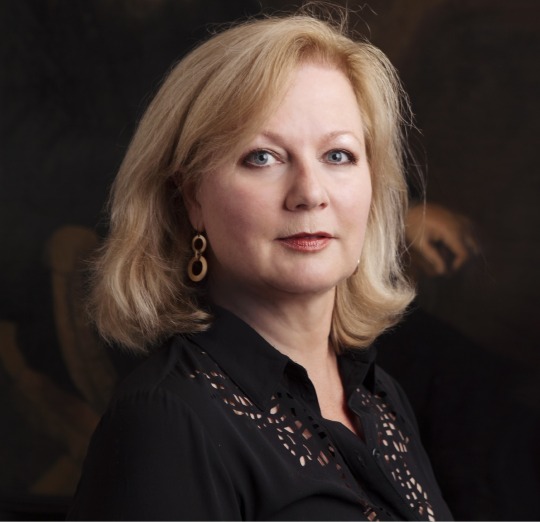
View On WordPress
0 notes
Photo

The Best Horror of the Year Volume Eleven, by Ellen Datlow, Night Shade Books, 2019. over art by Audrey Benjaminsen, info: nightshadebooks.com.
For more than three decades, Ellen Datlow has been at the center of horror. Bringing you the most frightening and terrifying stories, Datlow always has her finger on the pulse of what horror readers crave. Now, with the tenth volume of the series, Datlow is back again to bring you the stories that will keep you up at night. Encompassed in the pages of The Best Horror of the Year have been such illustrious writers as Neil Gaiman, Kim Newman, Stephen King, Linda Nagata, Laird Barron, Margo Lanagan, and many others. With each passing year, science, technology, and the march of time shine light into the craggy corners of the universe, making the fears of an earlier generation seem quaint. But this light creates its own shadows. The Best Horror of the Year chronicles these shifting shadows. It is a catalog of terror, fear, and unpleasantness as articulated by today’s most challenging and exciting writers.
Contents:
Summation 2018 — Ellen Datlow
I Remember Nothing — Anne Billson
Monkeys on the Beach — Ralph Robert Moore
Painted Wolves — Ray Cluley
Shit Happens — Michael Marshall Smith
You Know How the Story Goes — Thomas Olde Heuvelt
Back Along the Old Track — Sam Hicks
Masks — Peter Sutton
The Donner Party — Dale Bailey
Milkteeth — Kristi DeMeester
Haak — John Langan
Thin Cold Hands — Gemma Files
A Tiny Mirror by Eloise — C. C. Shepherd
I Love You Mary-Grace — Amelia Mangan
The Jaws of Ouroboros — Steve Toase
A Brief Moment of Rage — Bill Davidson
Golden Sun — Kristi DeMeester, Richard Thomas, Damien Angelica Walters, and Michael Wehunt
White Mare — Thana Niveau
Girls Without Their Faces On — Laird Barron
Thumbsucker — Robert Shearman
You Are Released — Joe Hill
Red Rain — Adam-Troy Castro
Split Chain Stitch — Steve Toase
No Exit — Orrin Grey
Haunt - Siobhan Carroll
Sleep — Carly Holmes
Honorable Mentions
About the Authors
Acknowledgment of Copyright
About the Editor
13 notes
·
View notes
Text
Will the new director of the Stedelijk Museum Amsterdam be female?
Will the new director of the Stedelijk Museum Amsterdam be female?
Two artistic directors prematurely left the museum in recent time: Ann Goldstein (left in 2013) and Beatrix Ruf (in 2017). The former because of she of communication problems, the latter because of accusations of conflicts of interest within the art market. Who could be her successor? It’s unlikely they will go for a foreigner again, and maybe not for a woman again either. But who…
View On WordPress
#Angelique Spaninks#Ann Demeester#Ann-Sophie Lehmann#Beatrix Ruf#Birgit Donker#Carin Reinders#Deirde Carasso#Els van Odijk#Emily Ansenk#Hester Alberdingk Thijm#Jet Bussemaker#Lisette Pelsers#Mariëtte Dölle#Meta Knol#Patty Wageman#Saskia Bak
0 notes
Photo

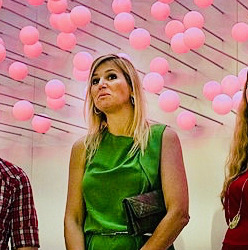
Through the Years → Queen Máxima of the Netherlands (351/∞)
23 May 2012 | Dutch Princess Maxima and Ann Demeester, director of the Appel arts centre, pose during the opening of the internationally oriented Appel arts centre at its new location on the Prins Hendrikkade in Amsterdam, the Netherlands. (Photo credit TOUSSAINT KLUITERS/AFP/GettyImages)
#Princess Maxima#Queen Maxima#The Netherlands#2012#Toussaint Kluiters#AFP#Getty Images#through the years: Maxima
3 notes
·
View notes
Text
#MeToo Work at Art Basel Offers Cautionary Tale About Political Art
The Los Angeles artist Andrea Bowers made a monumental artwork that she hoped would support the #MeToo movement and presented it, with the help of four galleries, at the prestigious Art Basel fair in Switzerland. Three imposing walls of text and photos made up of 167 red panels retold the stories of men and women who had been accused of sexual misconduct or harassment since the movement began in 2017.
But if the intent of her work, called “Open Secrets Part I & II, 2018, 2019,” was to raise awareness about insensitivity to women, it seemed to backfire when Helen Donahue, a woman who said she had been abused complained on Twitter last week that photographs of her were used without her consent, and another woman, Abby Carney, said her name had been used without her consent. In a highly unusual move, Ms. Bowers extracted the panel in question, and issued an apology for having used the photographs.
Ethics scholars said the incident at the fair, which runs through Sunday, offered a case study in the complexity of creating political art. What rules apply for appropriating images and stories previously posted on personal social media accounts, or allegations made in a journalistic context? As socially-conscious art has become increasingly popular, and these works enter galleries and other commercial settings, should moral lines be drawn?
“This is a whole new set of questions,” said Prof. Griselda Pollock, director of the Center for Cultural Analysis, Theory and History at the University of Leeds in Britain. “Artists have a right to quote from the world, and they have authorization to present it as their art. But if you use materials that come from one context of use, with its own inherent ethics and politics, into another one, then we find that there are people who are challenging it.”
Ann Demeester, director of the Frans Hals Museum in Haarlem, the Netherlands, who is an authority on ethics in contemporary art, said that Ms. Bowers’s work enters ambiguous territory because it makes artwork from personal images and material that was originally presented in a media context, without significant fictionalization or alteration.
“I don’t know of any ethical written standards for artists, not even for curators,” she said, “but there’s a common understanding that you try to be as respectful as possible for any human person that you involved in an artwork. But sometimes when a work is activist, some people fall victim.”
Protests erupted in 2017 at the Whitney Biennial when the artist Dana Schutz made a painting based on photographs of the mutilated body of Emmett Till, an African American teenager lynched in Mississippi in 1955. His mother had made the photos available to selected media after his death to illustrate the extreme brutality of his murder. Protesters objected to the fact that Ms. Schutz, a white artist, reused it for her own work.
The legal aspect at stake is a principle called “fair use,” which typically applies when an original is transformed by being incorporated into art. The limits of fair use have been tested in lawsuits against Richard Prince, who has appropriated images posted on social media for his artworks and has sold them for millions of dollars.
In this case, there is no lawsuit, but Robert Penchina, a partner at the law firm Ballard Spahr who specializes in copyright, trademark and media law, said that the fair-use principle could apply here. Including Ms. Donahue’s photo “in an artwork where the artist is putting it into context, combining it with 170-odd panels, is telling a particular story, transforming it by building upon it,” he said. “I think it is a good candidate for fair use, and potentially defensible on that ground.” The panel of the installation that contained the photograph was removed.
Charles Krause, founding director of the Center for Contemporary Political Art in Washington, said, “This incident at Basel is probably a useful cautionary tale” for artists who make political art, and for “the gallery owners and fair promoters who are their editors.”
“What about the accused?” he said in an email exchange. “How many of them have been found guilty in a court of law, as opposed to the court of public opinion and political expediency? Can we trust Andrea’s work is accurate with regard to them, or shouldn’t we concern ourselves about the actual facts of each individual case?”
The panel of the installation that was removed concerned the freelance writer Michael Hafford and allegations made in 2017 by fellow journalists and former girlfriends in an article in Jezebel, an online magazine.
Ms. Bowers, who declined to be interviewed for this piece, seems to have based her panel largely on that article, in which four women described physical or sexual mistreatment by Mr. Hafford. One of them, Ms. Donahue, told Jezebel he had caused her physical pain — and bruising — during intercourse that went beyond “rough sex.” Another, Abby Carney, said he had raped her, ignoring her requests to stop having sex one night in 2015. Ms. Carney wrote on Twitter, “TFW you find out someone turned your rape into “artwork” at Art Basel???”
Neither woman has filed formal charges against Mr. Hafford. Mr. Hafford, reached by phone and email, did not respond to questions emailed to him by The New York Times. Neither would he comment on the allegations in Jezebel.
In her artwork, Ms. Bowers incorporated photographs of Ms. Donahue’s bruised face, chest and shoulders that were originally posted on her Twitter account, and were also used in the Jezebel article; Ms. Carney’s full name was written into Ms. Bowers’ text.
Ms. Donahue protested on Twitter that use of her image in the work was “exploiting us for ‘art’.” She added, addressing Ms. Bowers, “Do you know how [expletive] insane it is to find out my beat up face and body are on display as art rn for rich ppl to gawk at thru a stranger’s instagram story.”
Ms. Bowers “absolutely realized that that was a mistake,” said Susanne Vielmetter, the owner and director of Vielmetter Los Angeles, one of the four galleries that collaborated to bring the artwork to the fair. “We all agreed it should be taken down,” she said.
After they removed the offending panel from the installation, Ms. Bowers contacted Ms. Donahue, and tried to explain the nature of her work and her intentions, Ms. Vielmetter said in an interview.
The artist, in a public statement sent to The New York Times by her gallery and published on Twitter on Wednesday, said: “I, Andrea Bowers, would like to apologize to the survivor whose image was included in my piece,” adding “I should have asked for her consent.”
Ms. Bowers is known for her drawings, videos and installations that focus on social issues ranging from workers’ rights to immigration to victims of harassment, including transgender women. Her artworks, in the collections of the Hammer Museum of Art, in Los Angeles, and the Museum of Modern Art and the Whitney Museum of American Art in New York, have reused text from protest posters and activist slogans.
The galleries that brought “Open Secrets” to Art Basel, which also include Andrew Kreps, Kaufmann Repetto and Capitain Petzel, also issued an apology, adding “We stand by Andrea Bowers and her work and support the conversation that has only just begun.”
In an interview, Ms. Carney said that she had never been contacted by the artist for any participation in the project and she had not received an apology from Ms. Bowers., nor was she contacted by the artist
“Part of the retraumatization is that it’s a half story or a poorly told version of the story,” she said in a telephone interview. “I’m trying to conclude that chapter, and to be known for my career successes and not for that.”
The gallery owner, Ms. Vielmetter, in an interview at the fair, said that “this piece is showing how widespread this problem of abuse is, and how the cultural dialogue of what is and what isn’t acceptable sexual behavior is changing right now.” She added, “The last thing that we wanted to do was to do more harm to one of the survivors.”
Ms. Vielmetter confirmed that the original asking price of the installation was $300,000 but added that the galleries who presented the art have now decided not to offer it for sale “out of respect for the ongoing conversation between Andrea Bowers and the survivor.”
Ms. Carney said that she has mixed feelings about the fact that the single panel was removed, because she supports the idea of a discussion about this topic.
“I believe she probably has good intentions,” Ms. Carney said of Ms. Bowers, “but when you’re telling someone else’s story, if you’re not careful, you can make it too general because you haven’t really taken the time to understand it.”
She added, “My upset is not so much that I hate having my name out there, but more about getting a chance to talk about it. We are all writers and journalists, and we have powerful voices of our own.”
Sahred From Source link Arts
from WordPress http://bit.ly/2Ikcm3m
via IFTTT
0 notes
Text
10 Adjustments You Can Make to Improve Your Chances of Business Success
SEO and content marketing are always changing. So you need to make constant adjustments in order to be successful long term. In SEO and in other areas of business, some of these small changes can help you make a big impact. Here’s more from members of the online small business community.
Bookmark These Free Stock Photography Sites
Visuals can help your business get people’s attention and make your content more effective. If you don’t have the time or ability to take quality photos on your own, you might consider stock photography. The sites in this Crowdspring post by Katie Lundin may be able to help.
Do Your Research Before Hiring an SEO Company
Hiring an SEO company can help your business gain visibility online. But many businesses have had negative SEO experiences because they didn’t take the necessary steps before making this move. Gary Shouldis explains in this blog post and video from 3Bug Media.
Appear in Local Search Listings on Google Assistant and Google Home
Tons of consumers are using Google Assistant and Google Home to find relevant service providers and other businesses. So if your company isn’t included, you could really be missing out. In this Search Engine Land post, Greg Sterling details how Google selects these businesses and how to get yours included.
Optimize Your Blog Content for Google Rankings
Your company’s blog can also be a major help when it comes to SEO. To really make the most of it, you need to optimize that content for Google Rankings. Jasmine Demeester shares tips for doing so in this Pixel Productions post. And BizSugar members shared thoughts on the post here.
Refresh Your Marketing Content
Constantly creating fresh content can benefit your business — but it can also be time consuming. Save time by refreshing old content in a new way for your audience. Anne Leuman examines how B2B brands can do this in this TopRank Marketing post.
Reengineer Your Company’s Processes
It’s important to create processes for your business and stick with them. But if you notice less-than-stellar results over a long period of time, you may need to reexamine those processes. Ben Mulholland offers some reengineering tips in this Process Street post.
Decide Whether to Have a Boss or Be the Boss
Business ownership isn’t right for everyone. Your success in business may depend on whether or not you’re actually well suited for the job. Learn more in this post by Joel Libava on The Franchise King blog.
Invest in Website Testing
Your website can make a major impact on the success of your business. So if it’s not functioning correctly or not giving customers a positive experience, you could really be missing out. Ivan Widjaya explains why user testing can help you solve these issues in this Noobpreneur post.
Win Your SEO Battles
Mastering SEO requires a constant battle. You need to regularly make changes and adjustments to improve your rankings and bring in new traffic, as Enstine Muki discusses in this Inspire to Thrive post. You can also see comments from the BizSugar community here.
Don’t Try to Rank #1 on Google
Improving your search rankings is a worthwhile goal for any business. But a lot of businesses seem to get sidetracked and focus on the wrong things. Neil Patel goes into detail and offers some helpful insights for businesses in this post.
If you’d like to suggest your favorite small business content to be considered for an upcoming community roundup, please send your news tips to: [email protected].
Image: Depositphotos.com
This article, “10 Adjustments You Can Make to Improve Your Chances of Business Success” was first published on Small Business Trends
https://smallbiztrends.com/
The post 10 Adjustments You Can Make to Improve Your Chances of Business Success appeared first on Unix Commerce.
from WordPress http://bit.ly/2GNxJtc
via IFTTT
0 notes
Link
Kamala D. Harris was this city’s top prosecutor, running to become California’s elected attorney general, when a scandal stunned her office and threatened to upend her campaign. One of Harris’s top deputies had emailed a colleague that a crime lab technician had become “increasingly UNDEPENDABLE for testimony.” Weeks later, the technician allegedly took home cocaine from the lab, possibly tainting evidence and raising concerns about hundreds of cases. Neither Harris nor the prosecutors working for her had informed defense attorneys of the problems — despite rules requiring such disclosure. Harris “failed to disclose information that clearly should have been disclosed,” Superior Court Judge Anne-Christine Massullo wrote in a scathing decision in May 2010. At first, Harris fought back. She blamed the police for failing to inform defense lawyers. She estimated that only about 20 cases initially would be affected. And her office accused the judge of bias because Massullo’s husband was a defense lawyer. But the turmoil increased. With the local criminal-justice system at risk of devolving into chaos, Harris took the extraordinary step of dismissing about 1,000 drug-related cases, including many in which convictions had been obtained and sentences were being served. Now this episode, which undercut Harris’s image as a polished leader and raised questions about her management style, has taken on new relevance as the senator seeks the Democratic nomination for the presidency. Casting herself as a “progressive prosecutor” who was concerned for the rights of defendants, Harris has highlighted her seven-year tenure as San Francisco’s top law enforcement official as evidence of how she balanced her roles. Harris’s opponent in the Democratic primary for attorney general, former Facebook general counsel Chris Kelly, said at the time that the ruling showed Harris had “systematically violated defendants’ civil and constitutional rights” because her office hid “damaging information about a police drug lab technician and was indifferent to demands that it account for its failings.” Kelly declined to comment. A review of the case, based on court records and interviews with key players, presents a portrait of Harris scrambling to manage a crisis that her staff saw coming but for which she was unprepared. It also shows how Harris, after six years as district attorney, had failed to put in place written guidelines for ensuring that defendants were informed about potentially tainted evidence and testimony that could lead to unfair convictions. Harris, in an interview with The Washington Post, stressed that the crime lab was run by the police. But she took responsibility for the failings, including that she had not developed a written policy so that her office would notify defendants about problems with witnesses and evidence, as required by law. “No excuses,” Harris said, sitting in a small, windowless office near the U.S. Capitol. “The buck stops with me.” San Francisco Public Defender Jeff Adachi in his office in San Francisco on Aug. 22, 2018. (Mason Trinca/for The Washington Post) One of the most important players in the case was Jeff Adachi, the city’s elected public defender, who was at odds with the way Harris handled the scandal. “When all that happened, I think she was slow to respond,” Adachi said, while not blaming Harris directly. Some of the attorneys in Harris’s office “knew it was a problem and never informed us, the defense, that there was a problem with this.” Adachi spoke at his office in an hour-long interview with The Post nine days before he died on Feb. 22. [Kamala Harris ‘grew up’ with Jeff Adachi. Then tragedy struck.] Adachi and Harris were old friends from the University of California’s Hastings College of the Law in San Francisco. But for much of 2010, the crime lab scandal pitted them against each other. Harris was elected district attorney in 2003 and reelected in 2007. As a candidate for attorney general, she stressed that she had simultaneously pushed criminal-justice reforms while also being tough on violent crime. Following state guidelines, her office had pursued thousands of cases against drug offenders, an unpopular position among many in liberal San Francisco. Those cases depended on evidence examined by the city’s understaffed crime lab, whose technicians regularly testified in court when Harris’s prosecutors went to trial. Deborah Madden was one of three lab workers. The city’s police department knew that Madden had been convicted for her role in a 2007 domestic altercation in which she threw a phone that injured another person. She was sentenced to 30 days in jail and three years of probation and prohibited from possessing alcohol or a firearm. She was temporarily suspended from working at a crime lab. Separately, Sharon Woo, an assistant district attorney working for Harris, became concerned that Madden wasn’t showing up to testify in court. That led her to write the email to Harris’s chief deputy in November 2009 that said Madden was “UNDEPENDABLE.” Massullo said in her ruling that when Woo wrote the email, “individuals at the highest levels of the District Attorney’s Office knew that Madden was not a dependable witness.” The judge did not name the individuals. Harris said in the interview that she was not told of the problem at the time by the police or her top assistants. Shown a copy of the correspondence during the interview, she said, “I never saw this email . . . and that was part of my frustration with the process. But I take full responsibility.” The email was not copied to Harris. Woo said in an interview that she did not discuss her concerns with Harris but sent her email to Harris’s top assistant at the time, Russell Giuntini. He did not return a call seeking comment. Judge incredulous A month after Woo’s email, the crisis escalated as Madden’s sister told authorities that she had discovered a vial of cocaine in Madden’s apartment. Madden later admitted that “she had taken some cocaine salt from the lab for personal use,” according to her attorney’s sentencing memorandum. She pleaded no contest to the state’s cocaine possession charge, which was removed from her record after she completed a drug-treatment program, according to her lawyer, Paul DeMeester. Madden declined to comment. Finally, in March 2010, the police publicly announced that there might be problems with evidence from the crime lab. Harris said it was not until that time that she was told of the problems. Lab director Jim Mudge shows criminalist Deborah Madden's work station at the police crime lab on March 10, 2010. The unit was closed shortly after Madden was accused of skimming cocaine evidence. (Marcio Jose Sanchez/AP) During the three months after Woo’s email, Harris’s office prosecuted cases that relied on crime lab testing, but defense attorneys were not told that evidence might have been tainted or that Woo had questioned the credibility of a key prosecution witness. With her race for attorney general underway, Harris, then 45, faced increasing scrutiny about when she knew about the scandal and why information had been withheld from defense attorneys. Adachi, the public defender, wrote to Harris, asking when her office first learned about the possible tainted evidence. As questions mounted, a group of defendants asked Massullo, the judge, to dismiss their drug cases. Woo appeared on behalf of Harris’s office to answer questions about why the district attorney didn’t inform defense lawyers about potentially tainted evidence. Under a 1963 U.S. Supreme Court case, Brady v. Maryland, prosecutors must turn over evidence that could exonerate defendants. A note attached to the Madden file said “Brady implications.” Woo testified that the district attorney’s office had no written procedure outlining how to handle Brady material that should be given to defense attorneys. Woo said Harris relied on police to inform them that such exculpatory evidence existed. The judge was incredulous. Former San Francisco lab technician Deborah Madden stands next to attorney Paul DeMeester for her arraignment on drug possession charges on April 5, 2010. (Paul Sakuma/AP) “But it is the district attorney’s office affirmative obligation,” Massullo said, according to a court transcript. “It’s not the police department who has the affirmative obligation. It’s the district attorney. That’s who the courts look to. That’s who the community looks to, to make sure all of that information constitutionally required is provided to the defense. . . . What I am gathering from what you are saying is that there is no formal way for your office —” Woo interjected: “In terms of a written policy, I don’t think there’s a written policy.” Massullo put the blame directly on Harris. In her ruling, she excoriated the district attorney for having “failed to disclose Madden’s criminal record, her suspension, and information relating to her ability to perform her work as a lab criminalist.” Harris, asked why her office had not developed a written Brady policy after six years in office, said she had been working on it for two years but had not completed it due to complications over who had access to police personnel information. “I cared a lot about working out a Brady policy. . . . I was saying in my office, we have to have one. It was a big controversy,” she told The Post. “We were working on this, and it was much too slow. It took too long.” Harris bristles At the office of the public defender, meanwhile, attorneys began an expensive, months-long process of examining hundreds of cases that might have involved tainted evidence. “We held a press conference and publicized the fact that all this misconduct was occurring, and I immediately said, ‘This is going to result in dismissal of hundreds of cases,’ ” Adachi said in the interview. “Her response was something like, ‘Yeah, this might affect a dozen cases.’ Right away, I knew this is much bigger, and you know as it happened, we got over a thousand cases dismissed.” Brian Buckelew, who was Harris’s director of legal affairs and public information, said Harris was “shocked” at the scope of the problem. “There was recognition that this is just sloppy and could result in something that is unfair,” he said. “It caught not only San Francisco by surprise but also counties across California and perhaps across the country.” As the criticism hurt Harris’s campaign for attorney general, she bristled at Massullo’s harsh words about her conduct. In June 2010, Harris’s office called Massullo’s ruling “contrary to law” and blamed the police for failing to disclose Madden’s conduct. Then, Harris’s office accused the judge of bias because her husband was a defense lawyer. That strategy failed when a Monterey County Superior Court judge ruled in August 2010 that Massullo had no bias in the case. The scandal escalated further when Adachi questioned whether Harris had also failed in separate cases to reveal the names of police officers who had been convicted or found to have committed misconduct. He said at the time that Harris was acting in an “unethical” fashion and “is putting the privacy interests of police officers who have misconduct records and who have been convicted of crimes above the rights of citizens to a fair and honest trial,” according to the San Francisco Chronicle. Harris said at the time that Adachi was “playing politics with public safety.” She said in the Post interview that the police had legitimate privacy concerns. Harris, newly elected as attorney general, gives her first news conference in Los Angeles on Nov. 30, 2010. (Damian Dovarganes/AP) Harris won her primary and then faced the Republican nominee, Los Angeles District Attorney Steve Cooley. He decided not to raise the specifics of the crime lab issue, while calling her a “radical” who threatened public safety. Harris declared victory on election night, but the race was so tight that Cooley did not concede until three weeks later. Cooley declined to comment. Harris said the crisis taught her lessons that she carries into her presidential campaign. “You cannot run an office without designating folks and giving them authority,” she said. But she told her deputies after the crime lab scandal to alert her about serious problems: “Hey, I need to know these things. It will not be bothering me. . . . My name is on the door. And I took an oath.” Some of Harris’s aides raised the possibility that only those cases with a proven taint should be dismissed, not all of those that might have been affected. “And I said, ‘No, we have to deal with the fact this now called into question the integrity of the system,’ ” Harris said. “There has to be consequences paid for that.”
0 notes
Text
Ann Demeester verlaat het Frans Hals Museum in Haarlem
Ann Demeester verlaat het Frans Hals Museum in Haarlem
Directeur Ann Demeester gaat het Frans Hals Museum per 1 februari 2022 verlaten. Demeester staat sinds 2014 aan het roer van het Frans Hals Museum en heeft daar een grootschalige koerswijziging doorgevoerd. Ze verlaat Haarlem om directeur te worden van het Kunsthaus Zürich, het grootste kunstmuseum van Zwitserland.
Ann Demeester: “Het voelt als een voorrecht om acht jaar lang aan het Frans Hals…

View On WordPress
0 notes
Photo
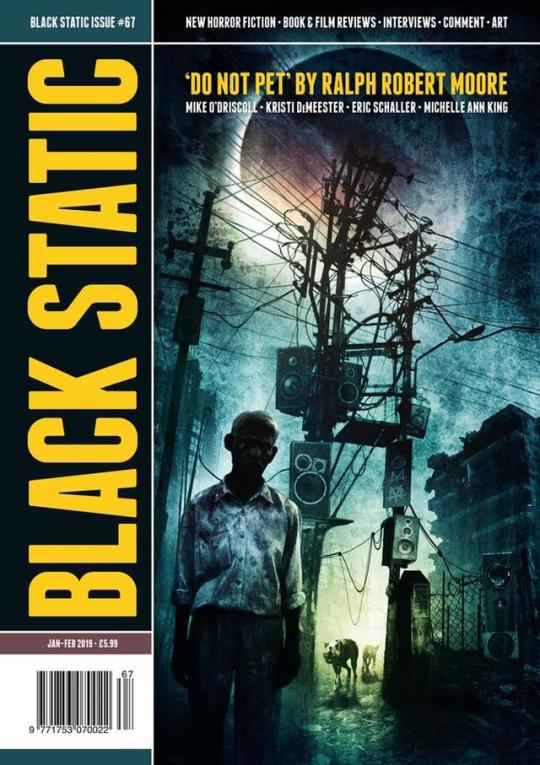

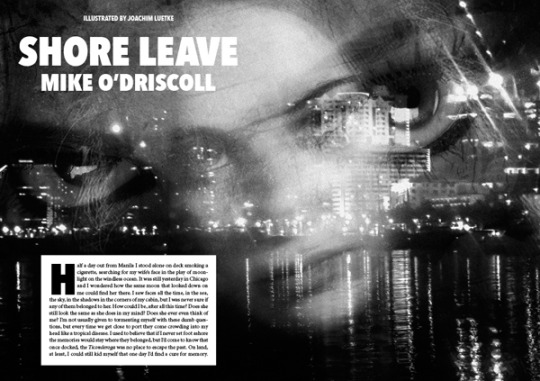

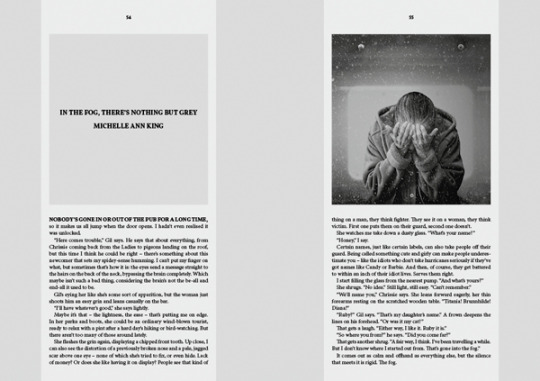

Black Static #67, edited by Andy Cox, TTA Press, January-February 2019. Cover art by Ben Baldwin, info: ttapress.com.
This Jan-Feb issue contains new cutting edge horror fiction by Ralph Robert Moore (novelette), Mike O'Driscoll (novelette), Kristi DeMeester, Michelle Ann King, and Eric Schaller (novelette). The cover art is 'Threshold' by Ben Baldwin, and interior illustrations are by Joachim Luetke, Dave Senecal, and Ben Baldwin. Regular features: Into the Woods by Ralph Robert Moore; Notes from the Borderland by Lynda E. Rucker; Case Notes book reviews by Georgina Bruce, Peter Tennant, Mike O'Driscoll, Laura Mauro, Daniel Carpenter, Philip Fracassi, and David Surface; Blood Spectrum film reviews by Gary Couzens.
Fiction
Do Not Pet by Ralph Robert Moore, illustrated by Ben Baldwin
Shore Leave by Mike O'Driscoll, illustrated by Joachim Luetke
The Silence of Prayer by Kristi DeMeester, illustrated by Dave Senecal
In the Fog, There's Nothing But Grey by Michelle Ann King,
All We Inherit by Eric Schaller
Columns
Notes from the Borderland by Lynda E. Rucker
Into the Woods by Ralph Robert Moore
Reviews
Case Notes: Book Reviews
Blood Spectrum: Film Reviews by Gary Couzens
8 notes
·
View notes
Text
Coffee Design: Stovetop Roasters In Ann Arbor, Michigan
How often do you proudly display your empty coffee bags upon your fridge? If the answer is not often enough, you’re probably not buying coffee from Ann Arbor’s Stovetop Roasters. Each offering has its own whimsical drawing from illustrator Jared DeMeester (sea creatures, land mammals, third-place athletes, etc.) We think all coffee bags should be beautiful enough for the refrigerator, but until then folks like Stovetop Roasters are leading the way.
Tell us a bit about your company.
We are Stovetop Roasters, of Ann Arbor, MI. A bit about us and our beliefs: we care about the people who grow, serve, and drink our coffee. At Stovetop we believe great coffee builds quality relationships, and quality relationships inspire great coffee. We’re serious about design, sourcing, roasting, and brewing, but what excites us most is coffee’s great knack for bringing people together. It’s a conversational beverage, and we think that’s significant.
When did the coffee package design debut?
Our current design debuted in February of 2017. We print on a paper sleeve that hugs our stout bags, which allows each coffee to have its own personality.
Who designed the package?
Our design is all executed in-house by Jared DeMeester. Jared is an illustrator/designer, focused on art with story-worthy soul. In 2015, Jared started a website called I Tried My Best, featuring hand drawings that occasionally lack skill but make up for it with charm. This concept laid the groundwork for Stovetop’s quirky aesthetic.
Kurt Vonnegut once said, “To practice any art, no matter how well or badly, is a way to make your soul grow.” As a team, we hope our design choices align with Vonnegut’s statement. Keep making, brewing, drawing, singing, dancing, or whatever it is that gives you life.
What coffee information do you share on the package?
Our packaging shares standard yet important info about origin, processing, elevation, and varietals, along with:
A sourcing note, which provides some short facts about the coffee’s origin, farmers/staff, sustainability practices, etc. It’s our opportunity and privilege to share something that gives the coffee’s producers a heartbeat.
An “ideal drinking location” and “drinking music,” gives us an opportunity to communicate our appreciation of sound and space. Most of our fondest coffee drinking memories reflect both coffee and the sensory details: where we are, who’s with us, what we’re hearing.
Our blends include an “imaginative tasting note,” a short blurb we derive from what we experience internally as we sip the coffee. For example, our summer blend talks about riding around on the back of a butterfly sipping nectar from flowers with straws. Emphasis on the “imaginative.”
The inside of our sleeve features small illustrations and recommendations for several different brewing methods/ratios.
Our last piece of information is “a note from the artist.” Each Stovetop coffee has its respective character, and the artist’s note helps us give the character voice and feeling.
What’s the motivation behind that?
Our motivation is always to give our product a sense of delight, honesty, and soul. Though we can’t sit at the table each morning with our beloved Stovetop customers, we can send them home with a bag that speaks to our favorite things: clean lines, dogs in clothing, coffee farmer shoutouts, smile-inducing haiku poems. We believe brand has the capability of bridging the gap between craft and non-craft drinkers.
What are some of the improvements made in the packaging?
The resealable zipper keeps coffee fresh and easily accessible for half-open morning eyes. We also love having the ability to design and print on all four sides of the sleeve. This gives us plenty of real estate for communicating who we are and what we do.
Why are aesthetics in coffee packaging so important?
It’s an invitation to the party! Our team at Stovetop has always aimed to grow the pie of specialty coffee rather than stealing someone else’s slice, so we constantly evaluate how we are branding these bags of beans. Jared says that if a coffee professional and his 88-year-old Grandma Alice can both pick up the back and feel delighted and engaged, his job is fulfilled.
Where is the bag manufactured?
Pacific Bag, located in Seattle, WA.
For package nerds, what type of package is it?
It is a 12 oz, side gusseted, aluminum foil bag.
Is the package recyclable/compostable?
Our paper sleeve is recyclable, though we notice many folks making use of it as refrigerator art. As we grow, we are exploring compostable options.
Where is it currently available?
You can find our coffee in shops across the Midwest. However, if you do not reside here, our website keeps tabs on all of our goodies. Stop in at our new cafe in Ann Arbor, Michigan for a hug. Thank you!
Thank you!
Company: Stovetop Roasters
Location: Ann Arbor, Michigan
Country: United States
Design Release: February, 2017
Designer: Jared DeMeester
Zachary Carlsen is a co-founder and editor at Sprudge Media Network. Read more Zachary Carlsen on Sprudge.
The post Coffee Design: Stovetop Roasters In Ann Arbor, Michigan appeared first on Sprudge.
from Sprudge https://ift.tt/2vQlPbW
0 notes
Video
Museumdirecteur Ann Demeester onderzoekt het werk van de fotograaf die zichzelf een jager noemde: Ed van der Elsken.
0 notes
Text
RTL Van Liempt Live: 'Street Art naar het Museum'. 08 April 2016
RTL Talk show host Paul van Liempt talks with guests Hugo Kaagman (stencil graffiti artist), Ann DeMeester (artistic director Frans Hals Museum and Mick La Rock about whether street art should or should not be shown in musea.
Video can be viewed on RTL Van Liempt Live (link)
0 notes
Photo




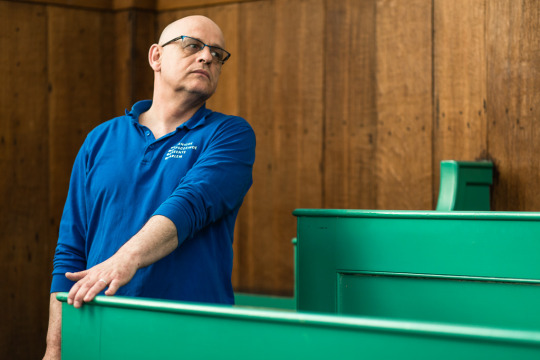


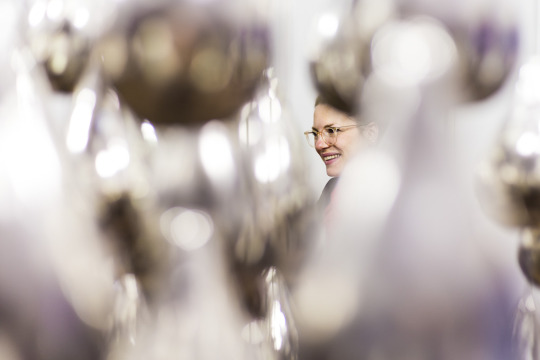


Opening Reiskoorts exhibition in and for De Hallen Haarlem by Maarten Nauw
More—www.flickr.com/photos/maartennauw/albums/72157668401384950
#De Hallen#De Hallen Haarlem#hallenhaarlem#Ann Demeester#opening#exhibition#Reiskoorts#Haarlem#Maarten Nauw#event photography
0 notes
Text
Artfest!
Artfest, our unpretentious talk show about art, was filmed by the VPRO and you can now watch it online! With an introduction on the theme (art & nature) featuring some of my favourite works, a quiz about real/fake art works and four amazing guests. Enjoy!
→ Artfest: De Natuureditie
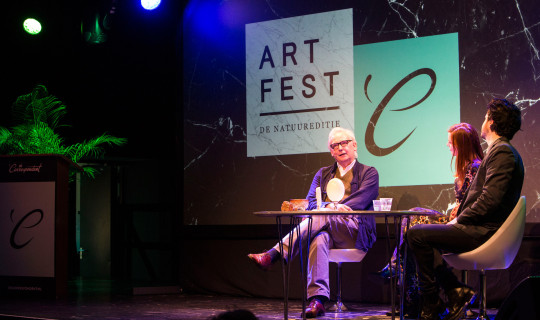
#VPRO#ARTFEST#ann demeester#erik de jong#sema bekirovic#koen vanmechelen#ernst-jan pfauth#natuur#talk show#nature#marian cousijn#mariancousijn#cousijn#de correspondent#cool#art
0 notes
Text
10 Adjustments You Can Make to Improve Your Chances of Business Success
SEO and content marketing are always changing. So you need to make constant adjustments in order to be successful long term. In SEO and in other areas of business, some of these small changes can help you make a big impact. Here’s more from members of the online small business community.
Bookmark These Free Stock Photography Sites
Visuals can help your business get people’s attention and make your content more effective. If you don’t have the time or ability to take quality photos on your own, you might consider stock photography. The sites in this Crowdspring post by Katie Lundin may be able to help.
Do Your Research Before Hiring an SEO Company
Hiring an SEO company can help your business gain visibility online. But many businesses have had negative SEO experiences because they didn’t take the necessary steps before making this move. Gary Shouldis explains in this blog post and video from 3Bug Media.
Appear in Local Search Listings on Google Assistant and Google Home
Tons of consumers are using Google Assistant and Google Home to find relevant service providers and other businesses. So if your company isn’t included, you could really be missing out. In this Search Engine Land post, Greg Sterling details how Google selects these businesses and how to get yours included.
Optimize Your Blog Content for Google Rankings
Your company’s blog can also be a major help when it comes to SEO. To really make the most of it, you need to optimize that content for Google Rankings. Jasmine Demeester shares tips for doing so in this Pixel Productions post. And BizSugar members shared thoughts on the post here.
Refresh Your Marketing Content
Constantly creating fresh content can benefit your business — but it can also be time consuming. Save time by refreshing old content in a new way for your audience. Anne Leuman examines how B2B brands can do this in this TopRank Marketing post.
Reengineer Your Company’s Processes
It’s important to create processes for your business and stick with them. But if you notice less-than-stellar results over a long period of time, you may need to reexamine those processes. Ben Mulholland offers some reengineering tips in this Process Street post.
Decide Whether to Have a Boss or Be the Boss
Business ownership isn’t right for everyone. Your success in business may depend on whether or not you’re actually well suited for the job. Learn more in this post by Joel Libava on The Franchise King blog.
Invest in Website Testing
Your website can make a major impact on the success of your business. So if it’s not functioning correctly or not giving customers a positive experience, you could really be missing out. Ivan Widjaya explains why user testing can help you solve these issues in this Noobpreneur post.
Win Your SEO Battles
Mastering SEO requires a constant battle. You need to regularly make changes and adjustments to improve your rankings and bring in new traffic, as Enstine Muki discusses in this Inspire to Thrive post. You can also see comments from the BizSugar community here.
Don’t Try to Rank #1 on Google
Improving your search rankings is a worthwhile goal for any business. But a lot of businesses seem to get sidetracked and focus on the wrong things. Neil Patel goes into detail and offers some helpful insights for businesses in this post.
If you’d like to suggest your favorite small business content to be considered for an upcoming community roundup, please send your news tips to: [email protected].
Image: Depositphotos.com
This article, “10 Adjustments You Can Make to Improve Your Chances of Business Success” was first published on Small Business Trends
https://smallbiztrends.com/
The post 10 Adjustments You Can Make to Improve Your Chances of Business Success appeared first on Unix Commerce.
from WordPress http://bit.ly/2GNxJtc
via IFTTT
0 notes
Text
New Post has been published on Haarlem updates
Nieuw bericht op https://www.haarlemupdates.nl/2020/05/11/online-tours-in-het-frans-hals-museum-door-directeur-ann-demeester/
Online tours in het Frans Hals Museum door directeur Ann Demeester
Op maandag 1 juni aanstaande heropent het Frans Hals Museum en kan de schitterende collectie weer in het echt worden bekeken. Het museum kan daarnaast digitaal worden bezocht en biedt vanaf vandaag een nieuwe, vijfdelige miniserie van online tours. Directeur Ann Demeester belicht in elke aflevering een thema uit ‘Haarlemse Helden. Andere Meesters’. Deze collectietentoonstelling […]
#Haarlem#Frans Hals Museum#Ann Demeester#Corona#CoronaHaarlem#online tour#Top#Nieuws#Haarlemse historie#Kunst & cultuur#Toerisme
0 notes